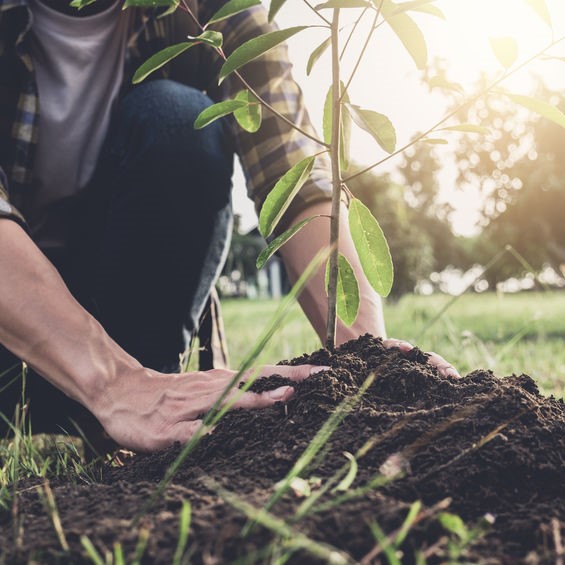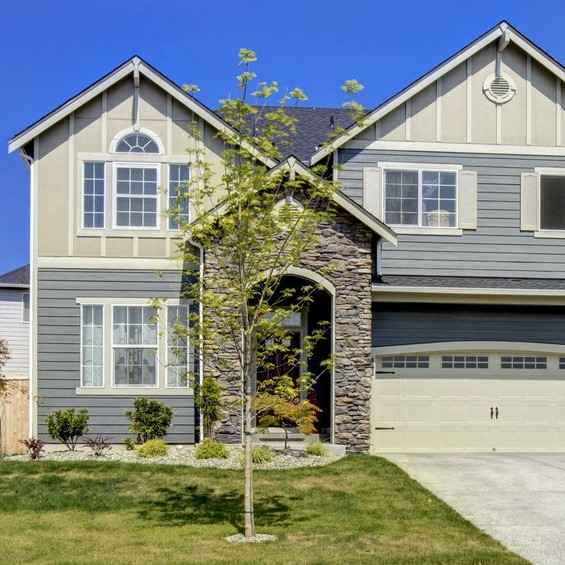
Keeping your tree healthy
Well, that is a debate that may be as timeless as the chicken and egg debate. There are different findings and opinions when it comes to tree nutrition and fertilization and tree fertilization techniques. It also can depend on the type of tree, the climate, location of the tree. Some experts will stand by the theory that a fertilization program is to maintain shrubs and trees in a forceful condition.
Tree fertilizer should be used to increase a tree’s resistance to diseases, injury, and insects. However, if plant or soil foliage testing finds there is a deficiency, adding a soil nutrient is recommended. You can identify those shrubs and trees in need of fertilization for stimulation by leaves that are pale green and undersized. These are indications that they have a reduced growth rate and could be in a declining condition, showed by dead branch tips.
This is often the result of diseases and insects. You should not use tree fertilizer on new planted specimens or have root damage caused by construction or trenching. The roots must become stabilized before tree fertilizer is applied or it can do more damage.
So, Do trees need to be fertilized? All of this is confusing, and the question is an honest question: Do they or don’t they need to be fertilized? Trees that are established and older do not need annual fertilizing. There are products on the market that you can apply to your trees any time during the year and they are time-released. They will work their way in as they need to be and when they need to be.
However, there are benefits to applying tree fertilizer at certain times of the year. A general rule is to apply tree fertilizer is toward the end of April or the start of May. You can also apply tree fertilizer in the late fall after the trees have gone dormant, or follow this recommended schedule:
Fall Fertilizing
- Assists in recovering nutrients that are lost in the soil lost during the summer.
- Encourages root growth when the ground isn’t frozen during the winter.
Spring Fertilizing
- Endorses new growth during the typical growing season.
- Green the leaves to keep them vibrant during the summer until fall.
- Provides vital nutrients to keep the tree healthy and fight off infection.
What is the best fertilizer for trees?
Tree fertilizer can be misunderstood and misused as a “food”, when that isn’t what it is at all, nor is it a cure-all for a tree that is ailing. Plants and trees get their food through photosynthesis, making their own food in a sugar-type product. Fertilizer supplies minerals or nutrients needed for growth and photosynthesis, and when minerals are deficient in the soil, adding tree fertilizer can maintain a sufficient supply.
There are two things to keep in mind when using tree fertilizer:
- When needed, tree fertilizer is beneficial
- Tree fertilizer is beneficial only when used right with the right amount
The nutrients applied most frequently are tree fertilizer with nitrogen, phosphorus, and potassium. In some parts of the country, depending on the soils, tree fertilizer with other nutrients are needed, including calcium, magnesium, and sulfur. Iron or zinc are sometimes needed but separate from the other tree fertilizer nutrients because a tree doesn’t need as much of them.
There are two types of tree fertilizers:
Fast-release, which is a water-soluble tree fertilizer and is the least expensive. The nutrients in this type may leach faster through the soil and in sandy soil that drains well, it can flow past the root system with just an infinitesimal amount of rain or irrigation. The leaching is slower in a fine-textured clay soil but has greater risk of runoff.
Slow-release tree fertilizer products release nitrogen slowly over an extended period. The nitrogen may be sulfur-coated or a urea-formaldehyde. Half of the nitrogen should be a slow-release nitrogen.
The best tree fertilizer is an all-natural fertilizer because there are three tree fertilization benefits to be had:
- Natural tree fertilizer, like composted sewage sludge, manure, or complete fertilizer blends will provide nitrogen and other nutrients slowly.
- Natural tree fertilizer provides minor minerals and nutrients, like iron or zinc, in insignificant amounts.
- Natural tree fertilizer improve the soil structure.
Is granular fertilizer better than liquid?
Granular and liquid both contain and provide the needed nutrients for survival and thriving, with one significant difference, and that depends on how it is applied, not the form. Granular tree fertilizers can be broadcast on the ground in a 2×2 placement or applied as a side dress and cultivated into the soil in shallow depth. You can broadcast a liquid tree fertilizer in a band application at mid-season in a side dress.
How do you deep fertilize a tree?
Deep tree fertilizing is a special process that requires special equipment and should be performed by an arborist. Basically, the general action of a deep fertilizing is to stick a pipe into the soil eight to twelve inches. They then force tree fertilizer through the pipe into the ground, getting to the roots faster where the nutrient is needed.

To the Root of the Matter
Can I use lawn fertilizer for trees? It is always best to read the label thoroughly regarding using lawn fertilizer on flowers, shrubs, or trees. If there isn’t any herbicide chemical or pesticide harmful to garden plants, lawn fertilizer on a tree will be safe, but only using a fraction of the standard amount, a recommended amount is one-fifth of the normal application.
Trees are a beautiful asset to our homes and the air around us, they clean the air we breathe; they provide shade and shelter. It is important to give them the best care possible while they are young and taking root, and it when they get older, protecting them from disease and insects. Refer to a trusted arborist is always a safe way to take care of them. Call (817) 717-7737 today for your tree assessment in Fort Worth, TX.
